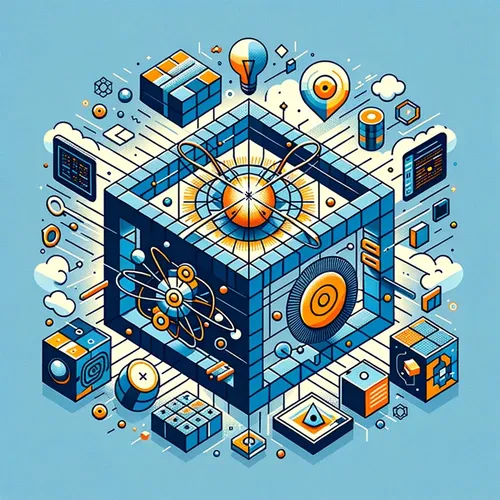Quantum-Classical Fusion: Hybrids Redefine Computing's Frontier
- Author
- Quiet. Please
- Published
- Tue 20 May 2025
- Episode Link
- https://www.spreaker.com/episode/quantum-classical-fusion-hybrids-redefine-computing-s-frontier--66171730
This is your Quantum Computing 101 podcast.
This is Leo, your Learning Enhanced Operator, coming to you on Quantum Computing 101—where today, we stand at the crossroads of reality and probability, where classical logic meets quantum possibility.
Let’s dive right in. This past week, the quantum-classical boundary blurred further with a hybrid computing breakthrough that everyone in the field is buzzing about. You might have seen the headlines about certified quantum randomness generated with a 56-qubit trapped-ion quantum computer, but what’s especially exciting is how these experiments are increasingly leveraging both quantum and classical resources in tandem. Right now, we’re witnessing the unfolding of a true hybrid era in computation.
Picture two worlds: the deterministic, yes-or-no terrain of classical bits, and the shimmering uncertainty of quantum bits—qubits—where a single entity can be both up and down, here and there, all at once. Hybrid quantum-classical solutions are the bridges, the digital suspension cables linking these landscapes, allowing us to exploit the strengths of both.
I want to take you into the heart of one such hybrid solution making headlines today. At the center is Quantinuum, a company helmed by Dr. Rajeeb Hazra, which recently used its cutting-edge System Model H2 quantum computer—boasting 56 tightly controlled trapped-ion qubits—in a partnership with JPMorganChase’s Global Technology Applied Research team. What they achieved isn’t just a leap; it’s a quantum leap. They performed Random Circuit Sampling, a notoriously hard problem designed to showcase quantum advantage, and they did it better—by a hundredfold—than any previous effort. But the magic was in how the quantum hardware generated outcomes that no classical system could replicate, and then—crucially—used classical supercomputers at Oak Ridge, Argonne, and Berkeley Labs to verify and analyze the randomness, completing a feedback loop of quantum and classical prowess.
Imagine this process like a relay race. The quantum system sprints the first, most treacherous lap, generating patterns of randomness fundamentally impossible for classical machines to fake. Then, the baton passes to the classical giants—massive supercomputers that catch, validate, and process these quantum feats, generating results that industries from finance to cybersecurity can trust implicitly.
It’s as if you’re watching a chess grandmaster and a Go champion collaborate to solve a puzzle that neither could conquer alone. The quantum system brings raw, probabilistic potential and the classical system applies logic, memory, and brute-force analysis. Together, they're redefining the art of the possible.
Let’s get a bit more technical for a moment. Trapped-ion quantum computers, like Quantinuum’s, use electric and magnetic fields to hold ions—charged atoms—in place, manipulating their quantum states with laser pulses. Each qubit is exquisitely sensitive, and error correction is a constant, humming concern. But it’s in the interplay between quantum state preparation, measurement, and classical post-processing that hybrid solutions shine. Quantum devices generate vast, complex data sets—like the multiverse collapsing into a single observable universe—and classical systems parse and make sense of these outcomes, verifying authenticity, extracting utility, and integrating findings into existing workflows.
This kind of hybrid algorithm isn’t just a technical curiosity—it’s a signpost on the road to practical quantum computing. Microsoft’s Azure Quantum program and teams at IBM, Google, and Rigetti are all investing in these hybrid approaches, knowing that quantum and classical resources must collaborate to tackle the real problems of drug discovery, logistics, and secure communications.
I see echoes of these quantum-classical dynamics in today’s world events. As nations form...
